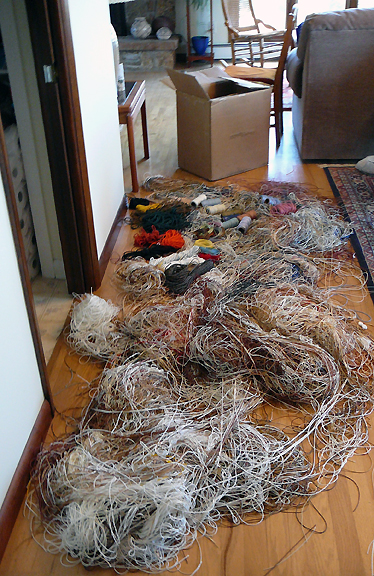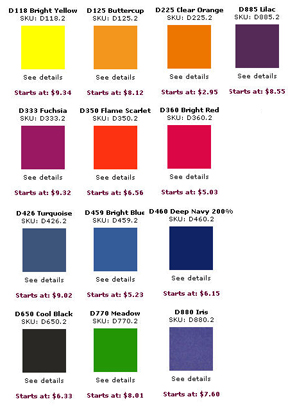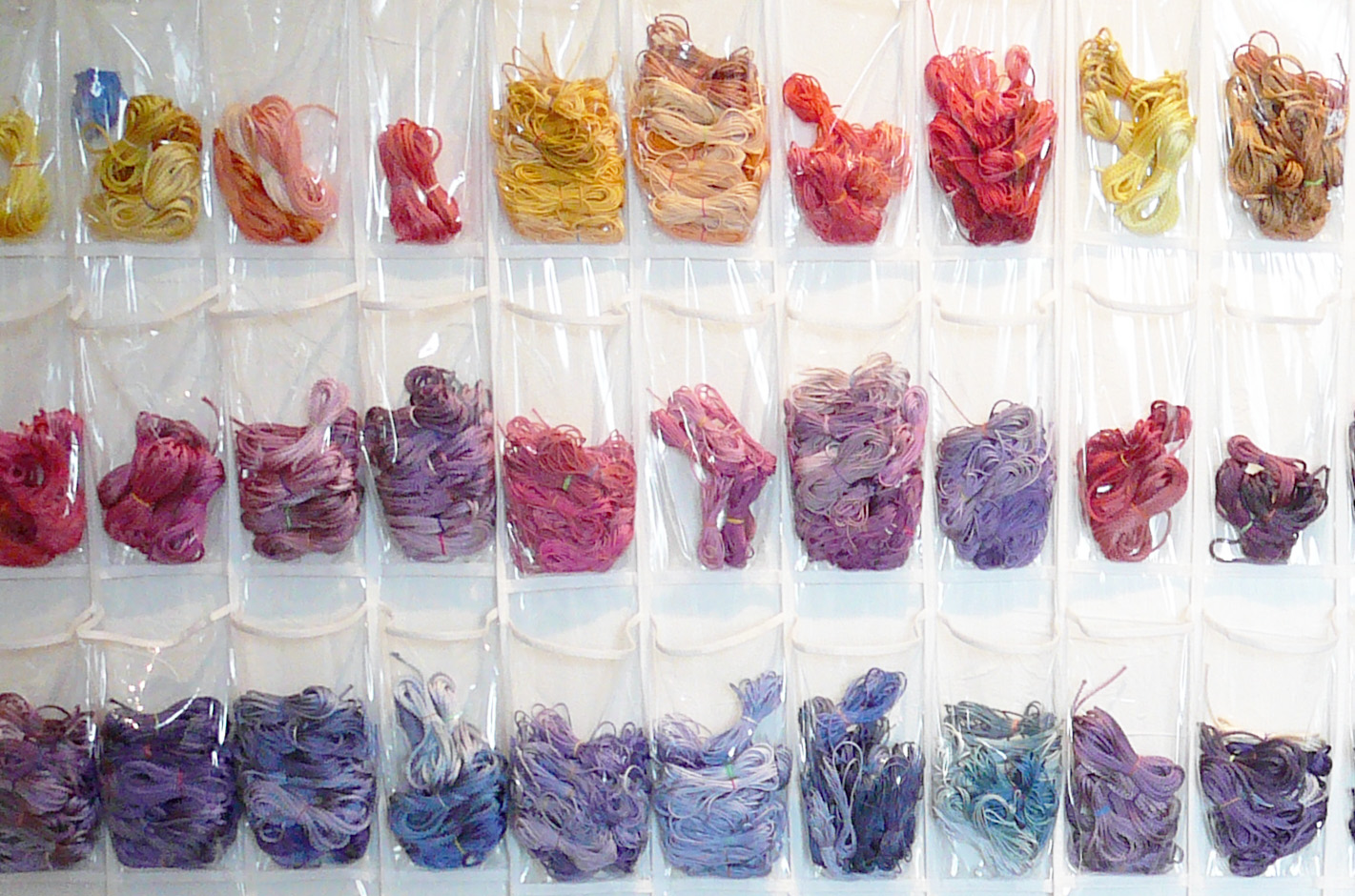CORRECTION: 12/15/2011 The cord I purchased was 1.8 mm, not 1.4mm (as previously stated).
 I’ve looked for years for just the right kind of cord for my pendants. Most of the colored cords I’ve found have been too bright. I found some black cord but it didn’t look right because there wasn’t any black in my pendants. Other cords were too stiff, too shiny, or frayed too easily or had something else wrong with them.
I’ve looked for years for just the right kind of cord for my pendants. Most of the colored cords I’ve found have been too bright. I found some black cord but it didn’t look right because there wasn’t any black in my pendants. Other cords were too stiff, too shiny, or frayed too easily or had something else wrong with them.
 Then I remembered that a number of years previously Jacqueline Lee had told me she used window blind cord for the pendants she sells in museums; she even told me where to get it: RW Rope online. She said to ask for the “handy hundred” cord, which I did. It is excellent cord but color availability varies because the the cord is ends from rolls used in a window covering factory It comes in 4 diameters (I got the largest 1.8 mm) and the price is excellent. Unfortunately very few of the colors I was looking for were available.
Then I remembered that a number of years previously Jacqueline Lee had told me she used window blind cord for the pendants she sells in museums; she even told me where to get it: RW Rope online. She said to ask for the “handy hundred” cord, which I did. It is excellent cord but color availability varies because the the cord is ends from rolls used in a window covering factory It comes in 4 diameters (I got the largest 1.8 mm) and the price is excellent. Unfortunately very few of the colors I was looking for were available.
I called the very helpful people at RW to see if other sizes and colors were available. I was told I could get cord in a wide variety of sizes and colors for practically nothing if I ordered a box of assorted ends from the cutting room.
 So I did. The shipping cost almost as much as the cord. This is what it looked like when I pulled it out of the box. Some of the cord was on spools, some in hanks and the rest was in a huge tangle. I did get some very nice colors but they comprised about 2% of the cord in the box and I spent quite a bit of time untangling it.
So I did. The shipping cost almost as much as the cord. This is what it looked like when I pulled it out of the box. Some of the cord was on spools, some in hanks and the rest was in a huge tangle. I did get some very nice colors but they comprised about 2% of the cord in the box and I spent quite a bit of time untangling it.
Now that I had all this cord, I couldn’t just throw it away, so I decided to dye it. This wasn’t as straightforward as I thought it would be. The cord is made of synthetic materials such as polyester and most dyes will only dye natural fibers.
 After quite a bit of research, I came across a company called Pro Chemical and Dye on the internet. They sell all kinds of dyes for various uses and one of them, called Pro-Disperse dye, comes in 12 colors and was just what I needed.
After quite a bit of research, I came across a company called Pro Chemical and Dye on the internet. They sell all kinds of dyes for various uses and one of them, called Pro-Disperse dye, comes in 12 colors and was just what I needed.
Its main drawback is that it is nasty stuff chemically. It is necessary to boil the cord in the dye along with some other chemicals, producing fumes that that you don’t want to breathe.
 Since it was midwinter and I couldn’t work outside, I turned the stove top area in my kitchen into an exhaust hood by surrounding the stove and exhaust fan with plastic sheets.
Since it was midwinter and I couldn’t work outside, I turned the stove top area in my kitchen into an exhaust hood by surrounding the stove and exhaust fan with plastic sheets.
This worked pretty well. I dyed cord of different colors as well as white cord and got a wide range of colors. Many of them were somewhat muted, which I wanted. Sometimes I redyed cord in a different color.
 Once the cord was dyed, it had to be rinsed several times. Then I had to find a way to dry it. I settled for dropping it in piles of different colors on an old blanket.
Once the cord was dyed, it had to be rinsed several times. Then I had to find a way to dry it. I settled for dropping it in piles of different colors on an old blanket.
Once the cords were dry I rolled them into hanks. I keep them in my studio where they hang on the wall in transparent shoe holders. They are a beautiful sight and I love looking at them. Visitors comment on the beautiful “wall art.”
The cords on the wall are sorted by color; this is about one-fifth of them.



My gosh what a fabulous idea! Beautiful colors too! WOW you worked hard and it paid off big time!!!
Thanks Dawna. Part II will be about How I used them.
Talk about making lemonade from lemons! WOW! A lot of work but well worth the results it seems.
I still have a lifetime supply of undyed cord!
Happy Christmas to US. Thank you, Carol, for sharing all the hard work of your research with anyone who follows your blog!
Thanks Priscilla! Watch for part 2.
These gives tribute to the tenacity of the creative. kudos for an amazing job!
Thank you Kathy!
Wow…sounds and looks like a lot of hard work…but so worth it…the hanks look really lovely!! Looks like you are set for a LONG time hehe!!
Thank you, Julz. A very long time.
For those who like shiny, white rayon rattail can be dyed using even Pinata or Ranger alcohol inks.
http://www.satincord.com/mm5/merchant.mvc?Screen=CTGY&Store_Code=S&Category_Code=a_1_cord_satin_rattail
Steamset or dryer set the dye for about 5 minutes.
http://www.rangerink.com/projects/fabric/projects_fabric_batikscarf.htm
I am drooling at the wonderful rainbow of cords!!
I love looking at them also. Thanks for your comment.
I took a dye class at pro chemical years ago when I was into shibori and tie die…. It has paid off in all of my artistic interests over the years and looks like it will again!
Carol:
I took your class at Synergy 2010 and have been in “awe” of your work ever since. I did try
finding blind cord but failed. So glad you explained where to get it and how to order it.
I have never seen such gorgeous work as yours and I know there are a lot out there. I would
love to take a longer more intense class of yours again, but I am afraid I won’t be able to.
Thank you Carolyn. Good luck with your polymer!